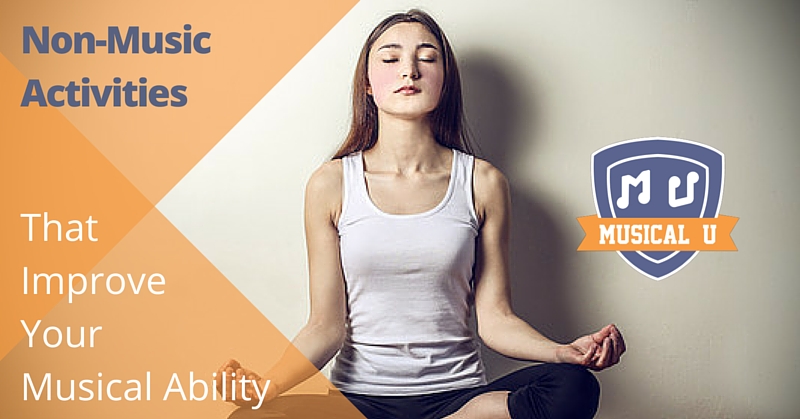Many people mistakenly think that musical ability is something you’re either born with or not. While we can agree your genetics may play a small role in determining your musicianship, your musical skill is something that can be trained and learned with practice like anything else.
Even the greatest artists in the world have to go through a strenuous amount of practice, spending countless hours perfecting their craft.
Music is a universal language that helps us connect with others and communicate with our inner selves. Thus, there’s always a good reason to nurture your musical soul.
Whether you want to be the next YouTube sensation or just want to impress your significant other with a beautiful song, here are 3 simple non-music activities that can take your musical ability to the next level.
1. Mindfulness Meditation
You may have heard of the many benefits of meditation, including decreased stress levels, lower risk of depression, better control of moods and emotions, and better sleep. In short, meditation has demonstrated its usefulness in improving the quality of many people’s lives and musicianship.
Meditation gives you space to retreat from the noise of life. It allows you to ground your mind for better practice and performances, helps you find inspiration, create new ideas, seek solutions to overcome obstacles and difficulties, build confidence and stage presence, and release physical and mental tension.
For beginners, the hardest part is to just get started. Once you’ve experienced the tremendous power of meditation, you’ll soon find yourself more than willing to sit down and quiet your thoughts for a couple of minutes on a daily basis! By cutting through the distractions and becoming aware of your mind and body, you’ll enhance your ability to play and communicate through music.
2. Breath Control
For aspiring and professional singers and wind players, correct diaphragmatic breathing is essential to a better sounding instrument. It enables you to hold longer notes and reduces the likelihood of straining yourself and causing injury.
Lie on the floor with your knees in a raised position and your feet flat on the floor. Then relax and start inhaling. Feel your stomach and diaphragm muscles expanding like an airbag. If your belly goes in when you breathe in, you’re doing it backwards. You can place a light book on your belly, centered at the waistline. When you inhale, you should be able to lift the book, moving it upward. Hold this for 5-15 seconds, then slowly exhale until your stomach returns to its natural flat position.
3. Rhythm Recognition Exercises
Many musicians, including veterans, feel rhythmically challenged at times. Some have a very hard time detecting the beat, clapping along, or following the pulse of music. Since beat, rhythm, and tempo are interconnected, if you have difficulties with one, you’re more inclined to have trouble with the others.
Get a stethoscope and listen to your heartbeat. What do you feel? Count heartbeats as “one-two, one-two, one-two”. Do you notice the slight space between each “one-two”? Try counting this space as a third beat – “one-two-(three)-one-two-(three)”. When you do this, the beat is now consistent (given that you have a healthy heart). You can also try clapping along or tapping your foot to the beats you hear. It may take a while, but with this kind of easy rhythm training you’ll eventually find yourself getting better at recognising rhythms in music.
There are many ways to enhance your music ability, even in situations where you don’t have access to music. We hope you’ve found these tips helpful. Remember to start small and stay patient.
If you have any non-music activities of your own that help nurture your musical soul, let us know in the comments below!







